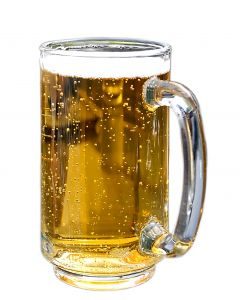When a person is pulled over on suspicion of drunk driving, the police have likely witnessed some type of suspect driving behavior. In some cases, the police will arrive at the scene of a drunk driving accident and become aware of the fact that one or more of the drivers may have been driving a motor vehicle under the influence of drugs or alcohol.
 Authorities have various tools at their disposal to determine if there is probable cause to place a person under arrest for drunk driving. In Massachusetts, the formal name for a drunk driving charge is operation of a motor vehicle under the influence intoxicating liquor or drugs (OUI). Probable cause means that there is some probability that defendant is guilty of an offense for which he or she is about to be arrested and charged. This is basically the lowest standard of proof in criminal or civil court system, but courts will, and often do, dismiss criminal cases following a motions hearing if the prosecutor cannot establish probable cause to have arrested or charged a defendant. This applies to cases following a Boston drunk driving accident as well.One of the tools officers will use to determine if a person was drunk while operating a motor vehicle is the standardized field sobriety test battery. These tests, or “SFSTs” as they are commonly called, have been approved by the U.S. Highway Traffic Safety Administration (NHTSA) after examining the results of decades of studies that began in the 1970s. This included lab work as well as ride-alongs with various law enforcement agencies across the country.
Authorities have various tools at their disposal to determine if there is probable cause to place a person under arrest for drunk driving. In Massachusetts, the formal name for a drunk driving charge is operation of a motor vehicle under the influence intoxicating liquor or drugs (OUI). Probable cause means that there is some probability that defendant is guilty of an offense for which he or she is about to be arrested and charged. This is basically the lowest standard of proof in criminal or civil court system, but courts will, and often do, dismiss criminal cases following a motions hearing if the prosecutor cannot establish probable cause to have arrested or charged a defendant. This applies to cases following a Boston drunk driving accident as well.One of the tools officers will use to determine if a person was drunk while operating a motor vehicle is the standardized field sobriety test battery. These tests, or “SFSTs” as they are commonly called, have been approved by the U.S. Highway Traffic Safety Administration (NHTSA) after examining the results of decades of studies that began in the 1970s. This included lab work as well as ride-alongs with various law enforcement agencies across the country.
As our Boston drunk driving accident lawyers can explain, this includes three tests known as the one legged stand (OLS), the walk and turn test (WAT), and the horizontal gaze nystagmus (HGN) test. The HGN test involves an officer who is trained to look for a type of jumping motion when the suspect’s eyes are tracking side to side (horizontally) that occurs due to alcohol consumption. However, because there are other causes of HGN, and the officer or trooper is not an optometrist, it is hard to introduce these test results in a drunk driving trial.
NHTSA (pronounced nit-sah) has created a scoring sheet to determine if a suspect has exhibited enough clues, or cues as they are sometimes called, to determine if a person is likely driving with a blood alcohol content over .10. This is above the legal limit of 0.08 grams of ethanol per hundred milliliters of blood.
However, in some cases, a driver might to be too drunk to even take the test, let alone safety drive a car to avoid a drunk driving accident. That is what allegedly happened, according to a recent article from the New York Post, when a 76-year-old defendant apparently told police that she couldn’t take the standardized field sobriety tests when asked to do so because she was “too drunk.” The police further alleged that she just asked the police to take her to jail. It should be noted that she has not been convicted of any crime in connection with her recent arrest and is presumed innocent unless and until she is found guilty in a court of law.
If you or someone you love has been injured a Boston drunk driving accident, call for a free and confidential appointment at (617) 777-7777.
Additional Resources:
Driver tells cops she’s ‘too drunk’ for sobriety test, April 21, 2017, By Jackie Salo, NY Post
More Blog Entries:
Boston Courts Deal with Issue of Drivers Alleged to Be On Marijuana, Feb. 13, 2017, Boston OUI Injury Lawyer Blog
 Boston Drunk Driving Accident Lawyer Blog
Boston Drunk Driving Accident Lawyer Blog

